
Though no pilot wants to experience an in-flight emergency, such as a loss of engine power, preparing for those emergencies is an important part of flight training.
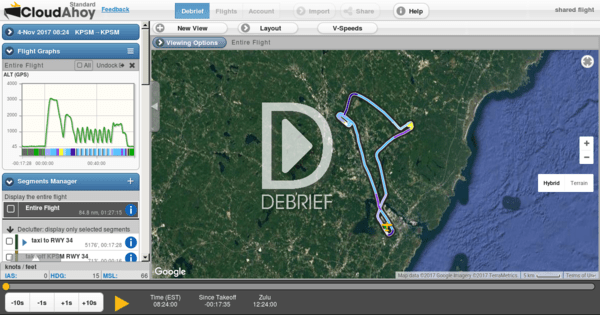
Last weekend’s flight lesson with John from CHI Aerospace focused on handling an in-flight loss of power. We performed 2 exercises during the lesson: the first simulating the initial portion of a power loss, and the second simulating the last moments of power loss: the landing.
The CloudAhoy debrief for this flight is the first I’ve posted which uses the flight data downloaded from the Dynon Skyview EFIS in the RV-12. The GPS is very high quality, and it contains a wealth of other information, such as pitch, roll, engine RPM, fuel pressure, and more.
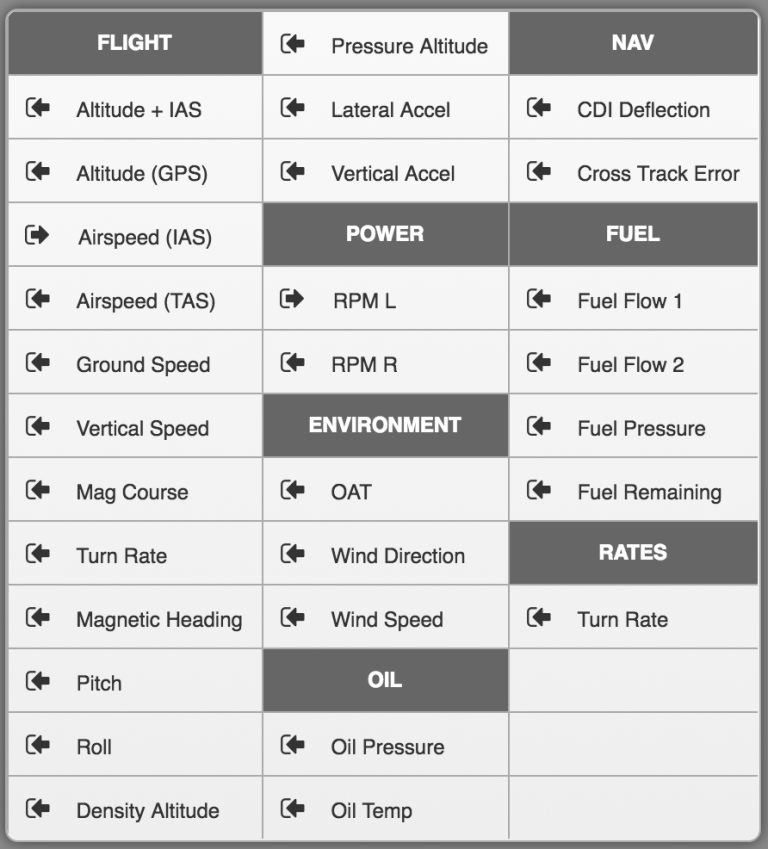
The first exercise was done away from the airport, and covered the initial steps taken when power is lost: troubleshooting and attempting to restore power, and in the event that engine power can’t be restored, picking a suitable location for a forced landing. Finally, we performed an approach – down to 500′ above ground level – to the field I picked for our “forced landing”.
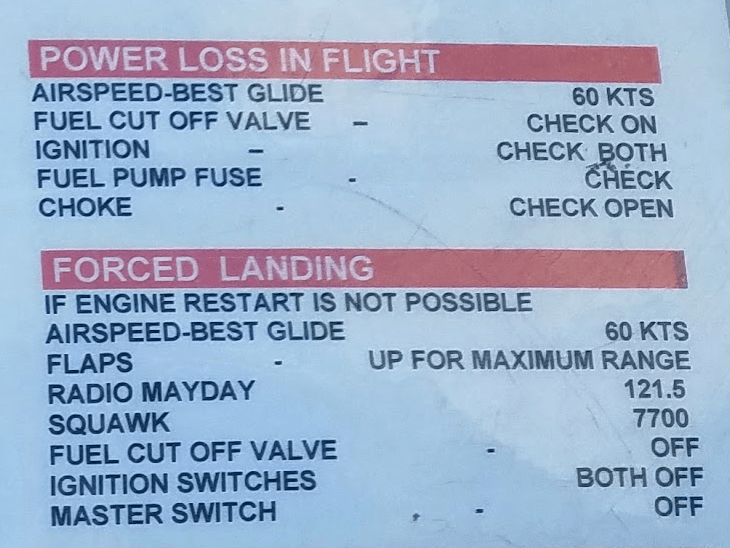
Before doing anything else, even grabbing the checklist, the best glide airspeed (VBG)should be established. In the RV-12, VBG is 60 knots. At that speed, the RV-12 will glide the furthest distance. Establishing and maintaining best glide provides the maximum amount of time to troubleshoot the problem and, if necessary, locate a suitable place to land.
This is a graph of my airspeed after we reduced the throttle to idle to simulate the loss of engine power (debrief here):

Overall, I did ok maintaining 60kts, though at one point in the descent I did get a little slow and had to lower the aircraft’s nose and reduce my bank angle. The electric elevator trim on the RV-12 makes it very simple to trim the plane to fly “hands off” at a particular airspeed/power setting combination, greatly reducing the amount of effort, both physical and mental, required to maintain the correct airspeed. Note that there are a few spikes in the airspeed that correspond to spots where we increased the engine RPM to keep the engine from cooling too quickly.
With the plane trimmed for VBG, I could then work through the next steps in the power loss checklist. The checklist covers the items that the pilot can quickly diagnose and correct while in the air: Is the fuel valve off? Is the ignition off? Is the fuel pump fuse blown? Is the engine choke closed? If any one of those items isn’t the cause for the power loss, it’s unlikely that we’ll be able to correct the problem and we need to start preparing for a forced landing.
This satellite image of the area near where we were performing the exercise shows a few suitable landing spots, including the one that I ultimately chose:
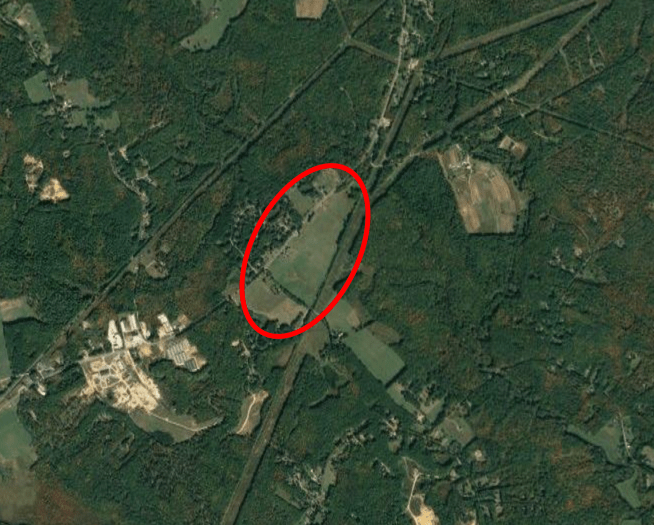
We began the exercise at about 3000′, just to the south of the field circled in red above. Because we were so close to our target landing location and so high, we needed to lose a lot of altitude but not get far away from the field. We performed a couple of downward spirals (debrief here), all the while remaining well within gliding distance of the field. During the spiral, we also determined the direction of the wind so that we could land into it. The chosen field was large enough in both dimensions that we could land with a close-to, if not totally, direct headwind.
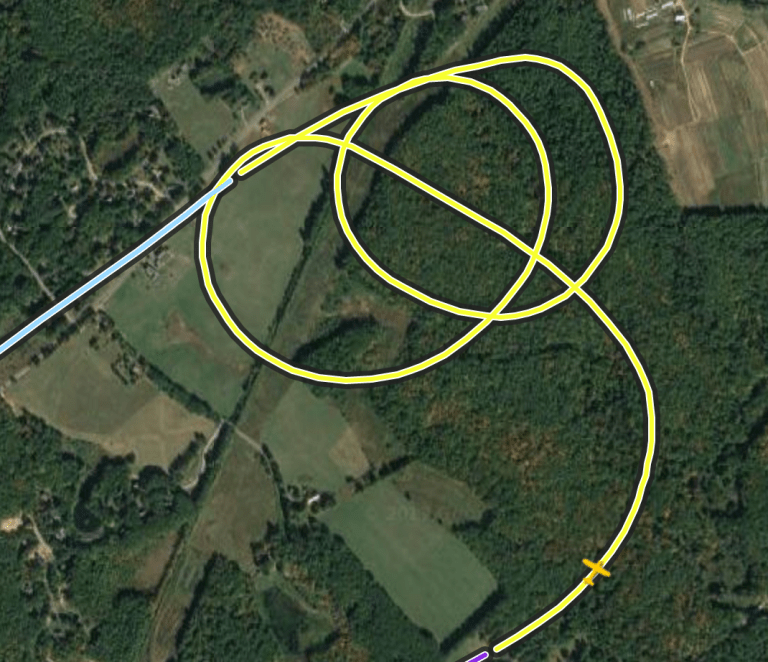
As you might be able to tell by debriefing, I was a bit high on the final approach to the field. Had it been an actual forced landing, I likely would’ve had to perform a forward slip to reduce altitude without gaining airspeed.
At about 500′ AGL, we added full throttle and climbed up and away from the field. We then headed towards Rochester, NH to do some power-off landings at KDAW – Skyhaven Airport.
The second portion of the lesson was dedicated to pattern work, including power-off landings (debrief here).
Where the first exercise we did focused on the first moments of loss of power in flight, power off landings focus on the last moments of power loss: the final approach and landing. To perform a power-off landing, the throttle is brought all the way to idle on the downwind leg when the aircraft is adjacent to the desired touchdown point. The pilot must then establish VBG and perform the rest of the approach and landing without adding any power.
One of the challenges is determining when to make the downwind-to-base turn. Too early and the plane to travel beyond the desired landing point – perhaps so far that a landing isn’t possible. (This happened during one of my attempts. Luckily it wasn’t an actual forced landing and we could choose to go around). If the downwind-to-base turn is made too late, the plane might not make it to the desired landing point. Again, not a good thing in an actual forced landing situation, where going around isn’t an option. The wind must be carefully considered, as generally you’ll be attempting to land into the wind, meaning the wind is trying to keep you from reaching the landing point.
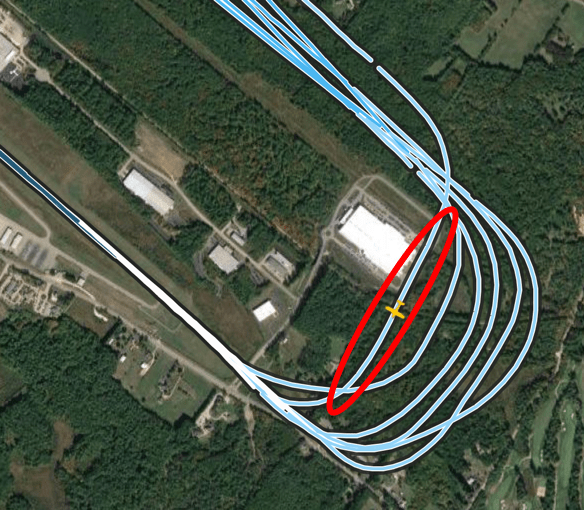
I have to admit, pattern work is one of my favorite parts of flying. The satisfaction of making a good landing just can’t be beat, and the challenge added by landing without power made even mediocre landings enjoyable. While the power off landings were fun, practicing and doing them proficiently will make an important contribution to my overall safety.
10 Nov 2017 #lesson #emergency-procedures